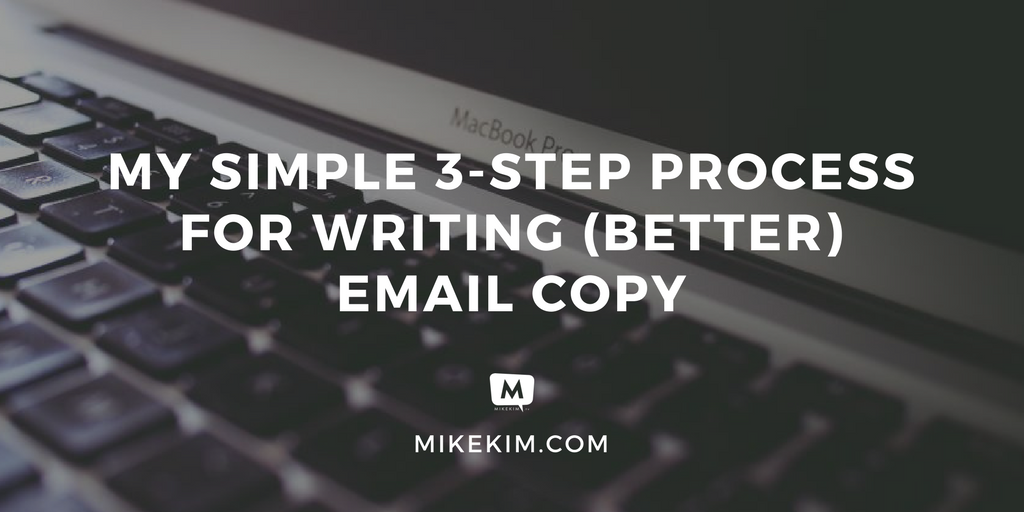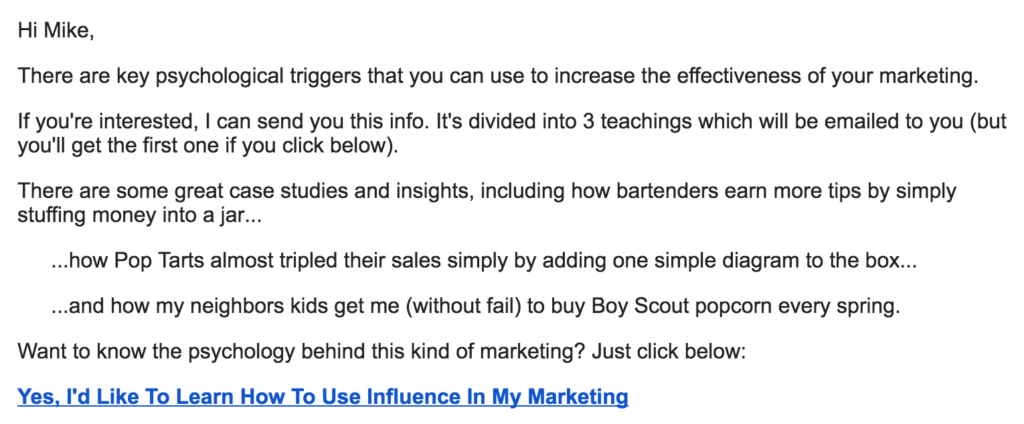 Writing email copy isn’t too hard if you have a process. Here’s mine, in order:
Writing email copy isn’t too hard if you have a process. Here’s mine, in order:
- Write the call to action at the end of the email
- Write the opening sentence using “I never thought it was possible but…”
- Fill in the body copy
Why write the call to action first?
Take a page out of Stephen Covey’s 7 Habits of Highly Effective People: begin with the end in mind.
It’s like planning a trip. The first thing you do is decide what city or country you want to visit. You book the flights, the hotels, and then work backwards. Likewise, you (hopefully) have a final “destination” for your reader. Working backwards from there makes writing the email much easier.
Why write the opening sentence using “I never thought it was possible but…”?
Doing so helps you write stronger opening lines. You already know the most important copy is your subject line (otherwise no one will open it) … but the second most important thing is a strong opening line that engages the reader. For example:

I wrote the first line of the email in my draft as:
“I never thought it was possible but … there are key psychological triggers that you can use to increase the effectiveness of your marketing.”
Then I simply deleted the “I never thought it was possible” line. Voila, a stronger opening line!
Mediocre copy would have started with the second line: “Hey Mike, I’ve got some great marketing tips for you today! If you’re interested, I can send you this info. It’s divided into 3 teachings which will be emailed blah, blah, blah…”
You can see how much stronger the original opening line is, can’t you? Write your opening line with “I never thought it was possible but …” and finish the thought.
Then delete the “I never thought it was possible but…” and you’ll have a much more engaged reader. To recap:
- Write the call to action at the end of the email
- Write the opening sentence using “I never thought it was possible but…”
- Fill in the body copy
Need more ideas for your email subject lines?
Download my free guide, 49 Email Subject Headlines. It’s a copywriter’s “cheat sheet” to marketing emails that get opened.
